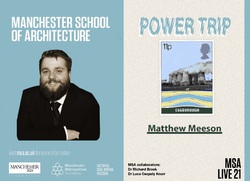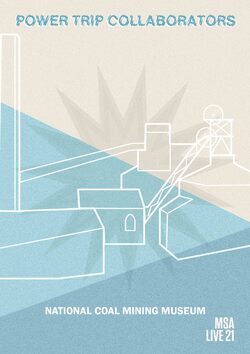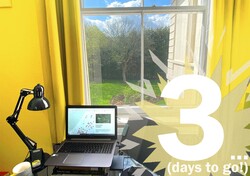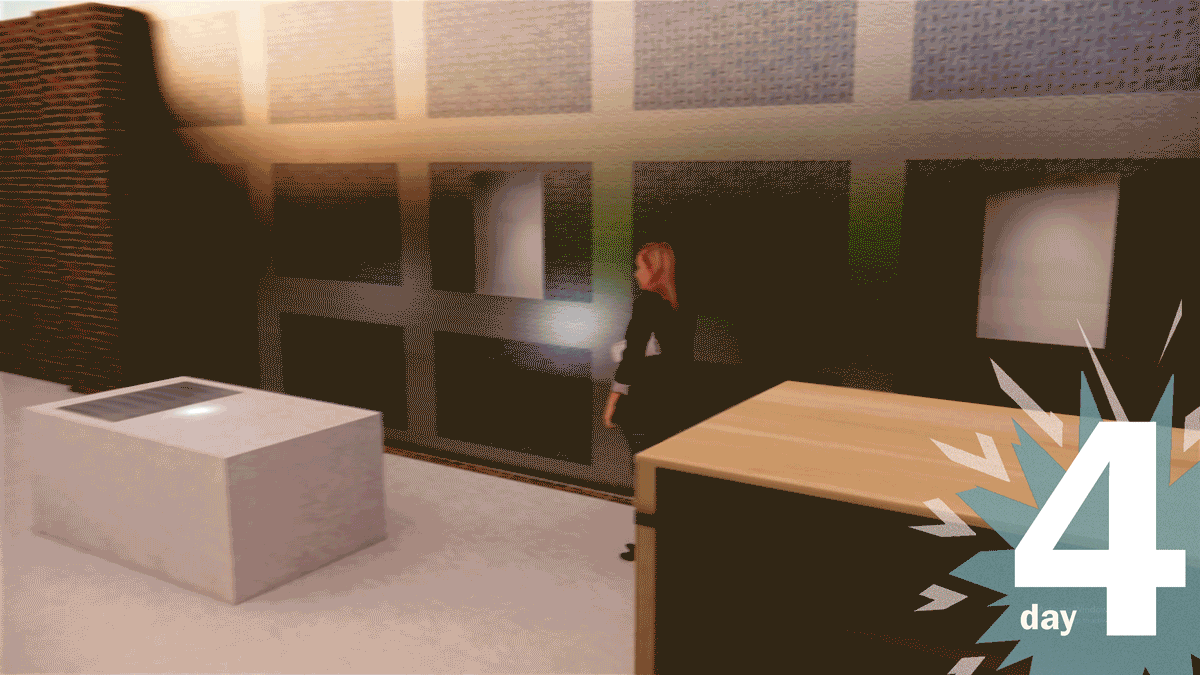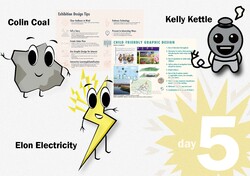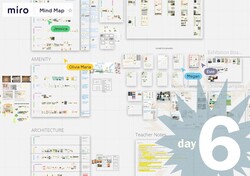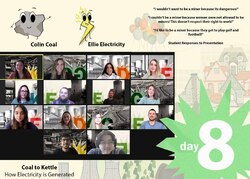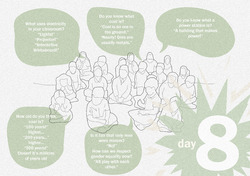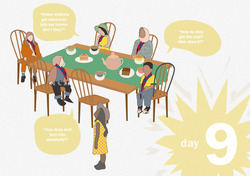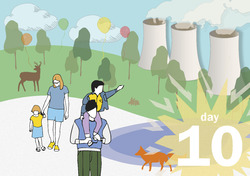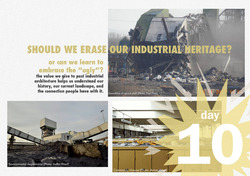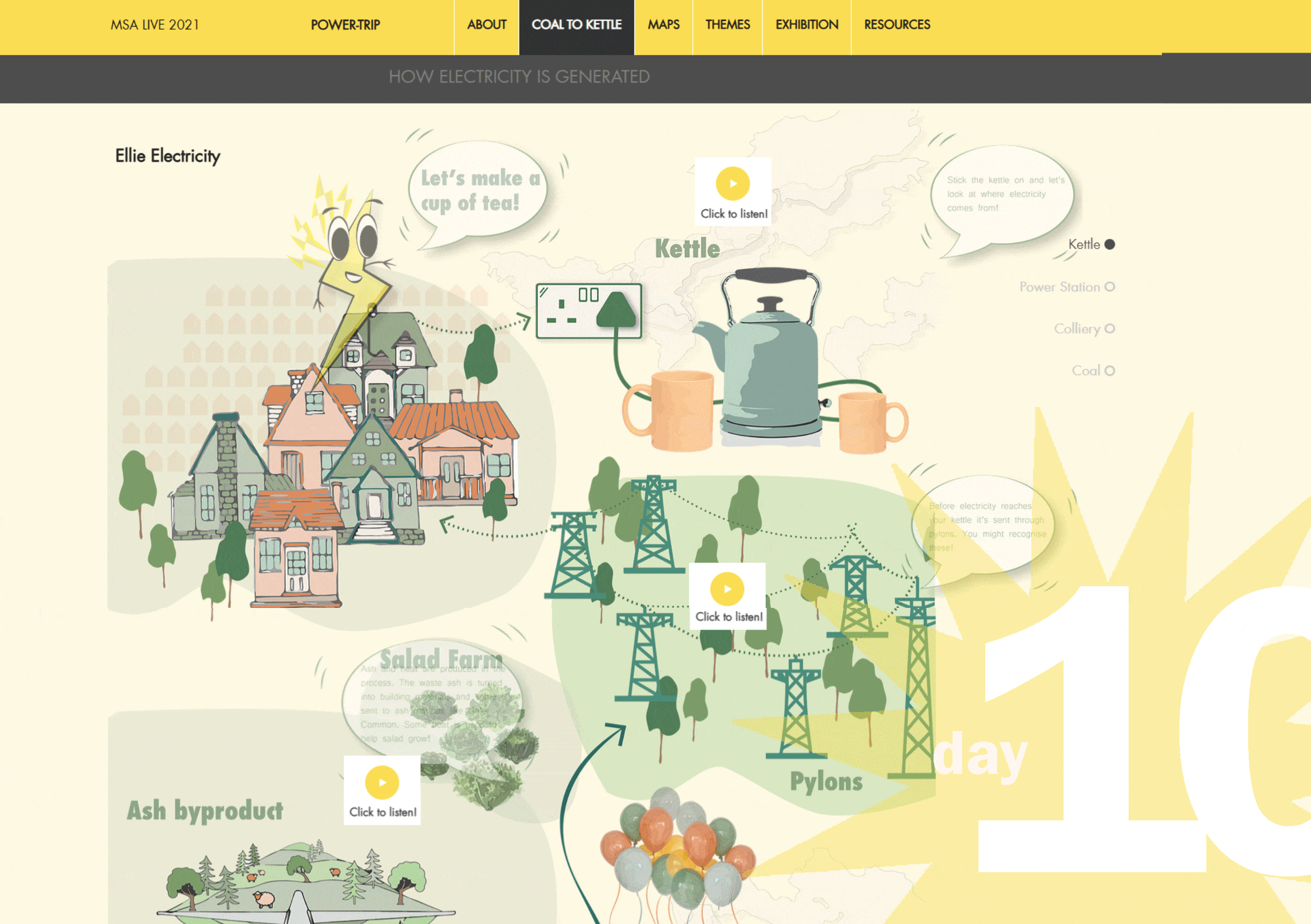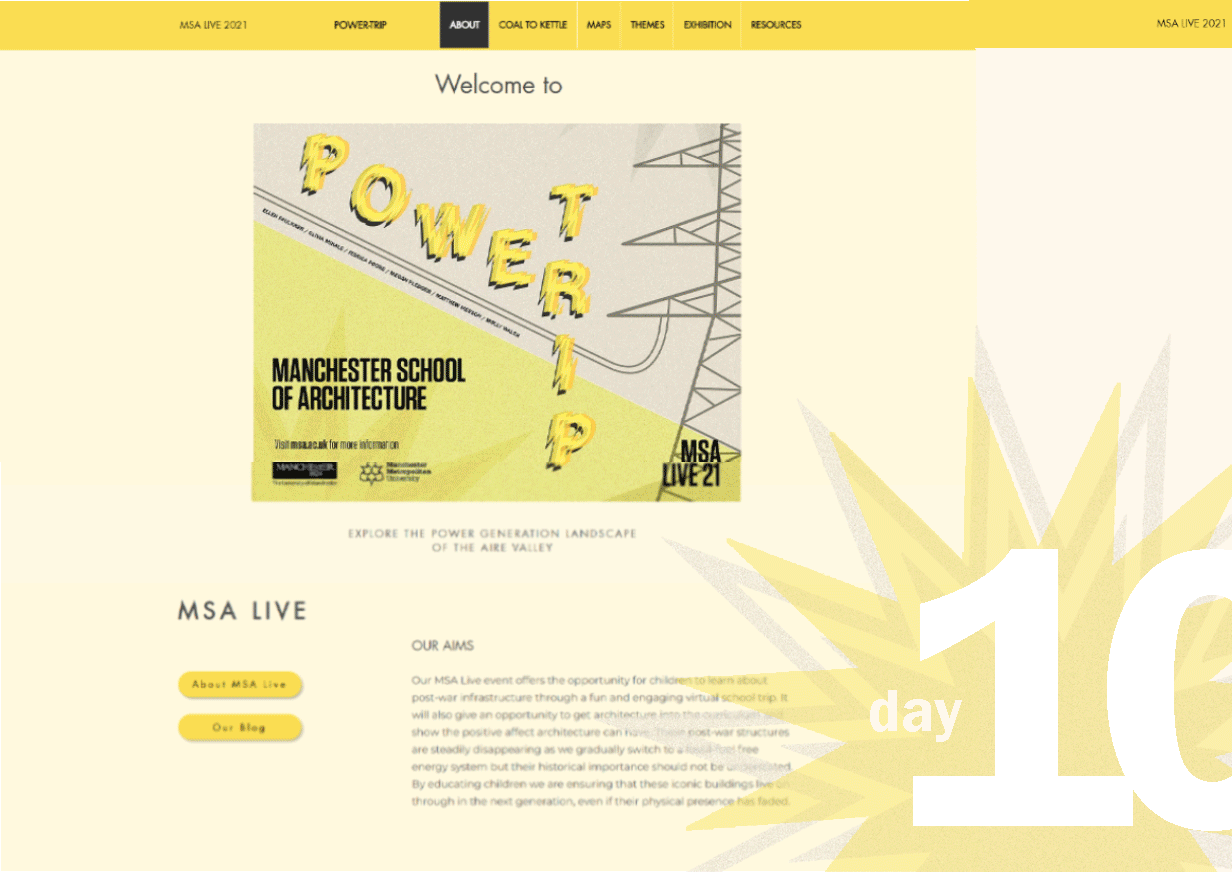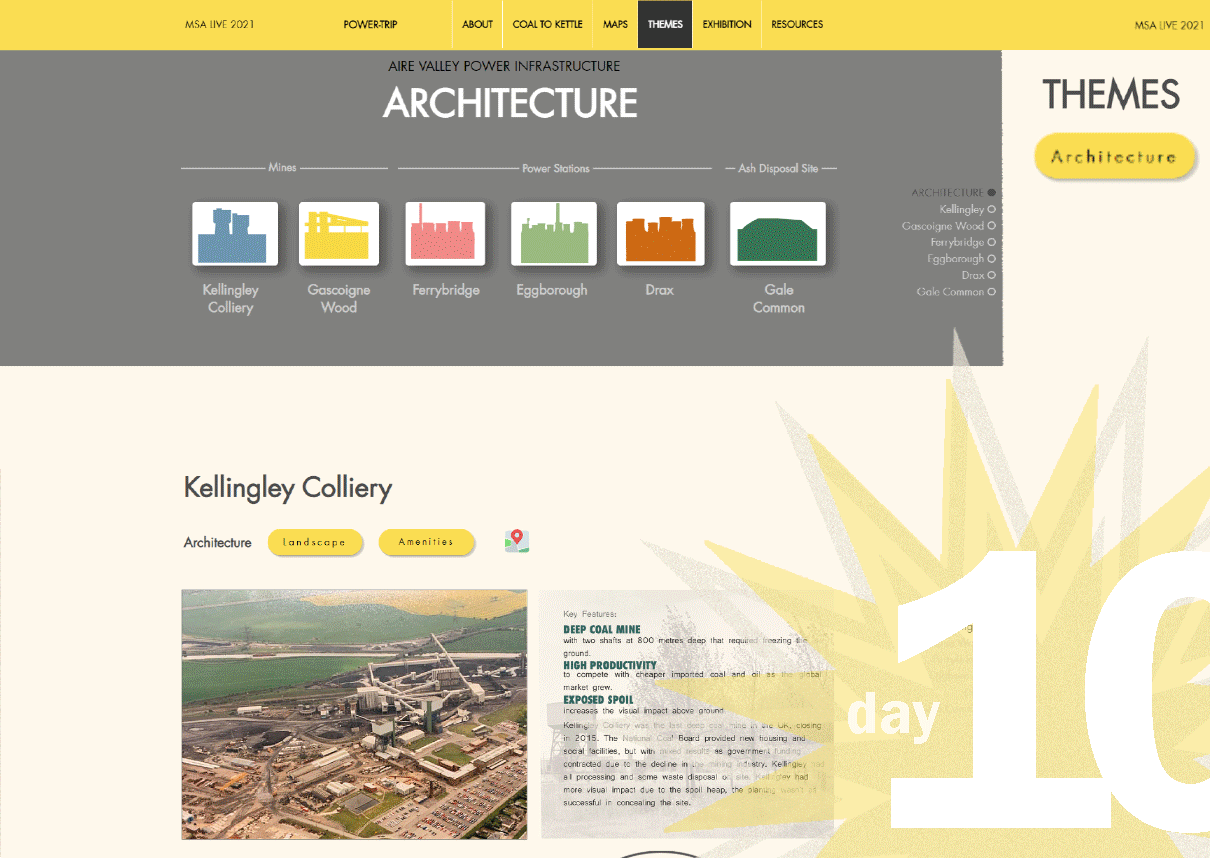Group 01
POWER TRIP
Power Trip will bring together the stories of power stations and coal mines into a virtual day-out for school children. Valuable built and natural environment school trips have been a severely restricted educational tool in the COVID-19 pandemic. This group will create a virtual school trip experience in the form of a website which re-interprets the complex histories of these infrastructures in an engaging, child-friendly experience. It will also act as a digital archive as power stations and coal mines are being demolished to make way for greener infrastructure. Content produced will also be curated to form a physical exhibition at the National Coal Mining Museum in the future. It is easy to recognise the architectural presence of post-war power stations and coal mines with their Brutalist form, but do we consider the landscape, social, and political context they sit within?
Megan P / Matthew M / Jessica P / Molly W / Maria Olivia M / Ellen F








